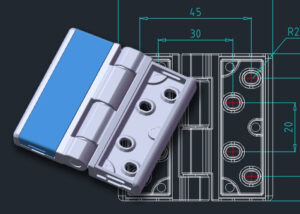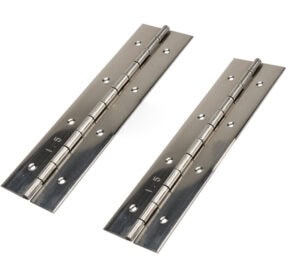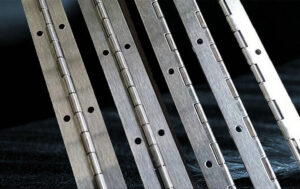A stuck hinge pin on a door can prevent you from taking the door off the hinges to move stuff in or out of a room, replace the door or repair the doorjamb.
To remove a stuck door hinge pin, apply penetrating oil, tap it with a hammer, and use pliers to pull it out. For stubborn pins, heat or a hinge pin removal tool may be required.
Several methods can help you remove a stuck hinge pin, depending on the severity of the issue.
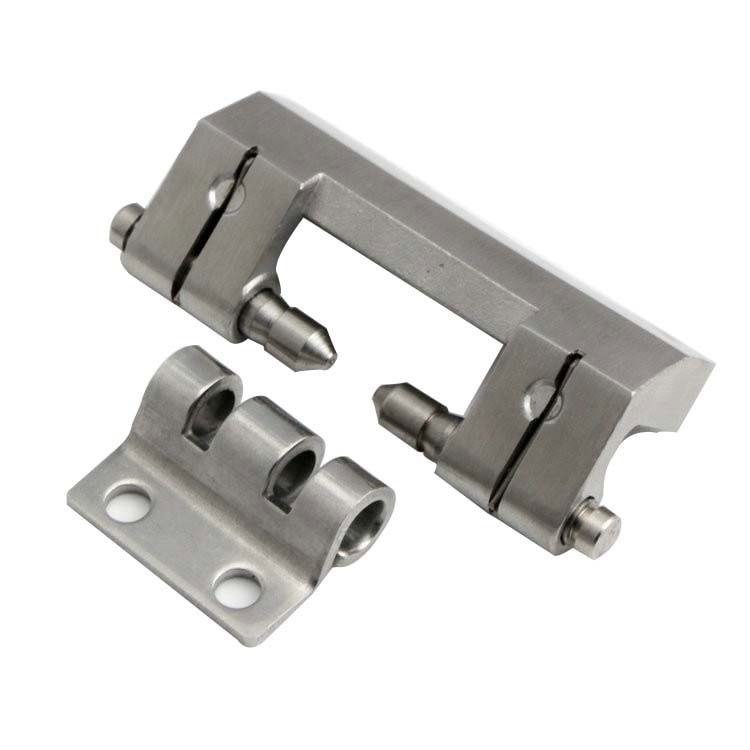
Apply Penetrating Oil or Lubricant
One of the first steps in removing a stuck hinge pin is to use penetrating oil, such as WD-40, to loosen any rust or dirt that may be causing the pin to stick. Spray the oil around the hinge pin and allow it to sit for a few minutes, letting the lubricant work its way into the crevices.
Once the oil has had time to settle, gently tap the hinge pin with a hammer to see if it loosens. The oil should help ease the process, reducing friction and breaking up rust.
Use a Hammer and Nail Set
After lubricating the hinge, a hammer and nail set can provide the force needed to dislodge the pin. Position the nail set under the hinge pin head and give it gentle taps to push the pin upwards. If the pin doesn’t move, gradually increase the force but be cautious not to damage the hinge or surrounding area.
This method works especially well for smaller hinges, like those on piano hinges or trailer door hinges, which may not require as much force as larger heavy-duty hinges.
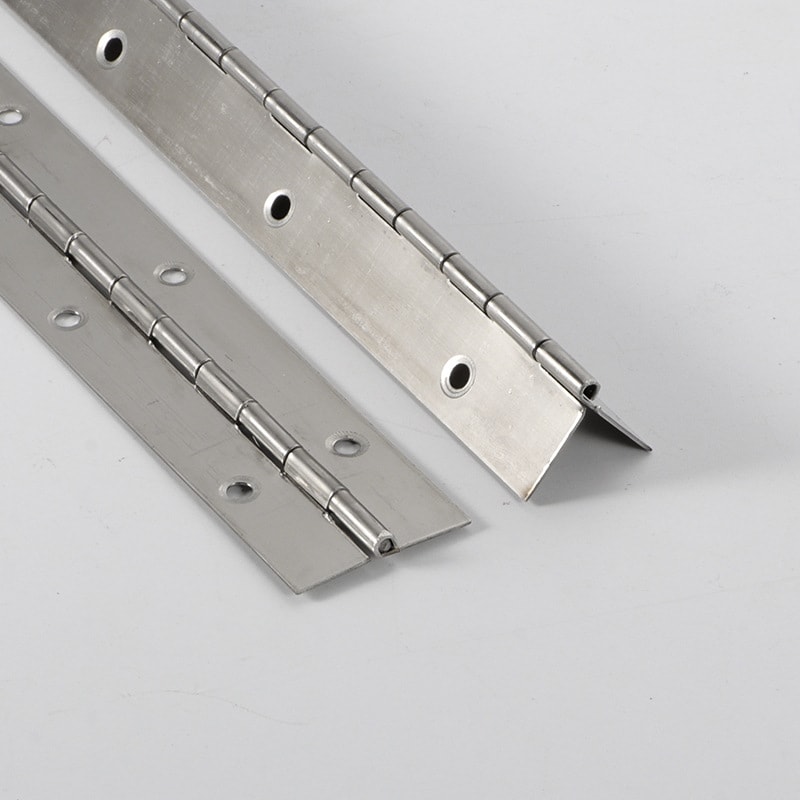
Heat the Hinge to Loosen Stuck Pins
If the hinge pin remains stuck after lubrication, heat may help. Using a hairdryer or heat gun, carefully apply heat to the hinge. The expansion caused by the heat can break the bond of rust or dirt that’s holding the pin in place.
Be mindful of overheating the door or hinge as it could cause damage. Once the hinge is warmed up, repeat the hammer-tapping process to try and remove the pin.
Remove Paint or Debris Obstructing the Pin
Sometimes, paint buildup can trap the hinge pin in place, especially in older or repainted doors. Use a utility knife or putty knife to carefully scrape away paint around the hinge pin. Focus on the areas around the pinhead and the seam where it fits into the hinge.
Once the paint is cleared, retry removing the pin using pliers or a hammer. This is an important step if the hinge was painted over during renovations, especially with custom marine hinges or aluminum hinges where aesthetics play a role.
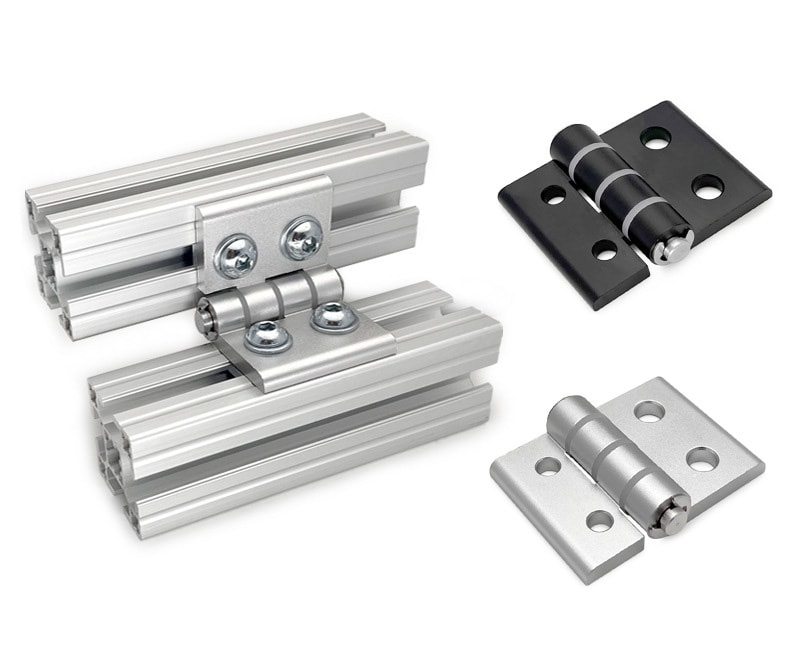
Use a Hinge Pin Removal Tool
If the standard methods don’t work, a hinge pin removal tool might be necessary. This tool is designed to provide the right amount of leverage without damaging the hinge or door. Place the tool under the pin head and apply even pressure to pry the pin out.
Hinge pin removal tools are particularly useful for detachable hinges or old, rusted pins that are otherwise too difficult to remove with basic hand tools.
Try a Screwdriver or Pliers for Extra Leverage
For hinge pins that are slightly loose but not fully freed, a flathead screwdriver can offer extra leverage. Slide the screwdriver underneath the pin head and gently twist to lift it out.
Locking pliers, such as Vise-Grips, can also be helpful for gripping the pin securely and applying steady force. Clamp the pliers onto the pin and twist to work the pin free.
Consider Removing the Entire Hinge
If the hinge pin is truly stuck and none of the above methods work, you might need to remove the entire hinge from the door and frame. Unscrew the hinge and remove it completely, allowing you to deal with the pin without the tension of the mounted door.
Once removed, the pin may come out more easily, or you can take the hinge to a professional for help. This approach can also be effective with specialty climatic test chamber hinges, where precision is critical.
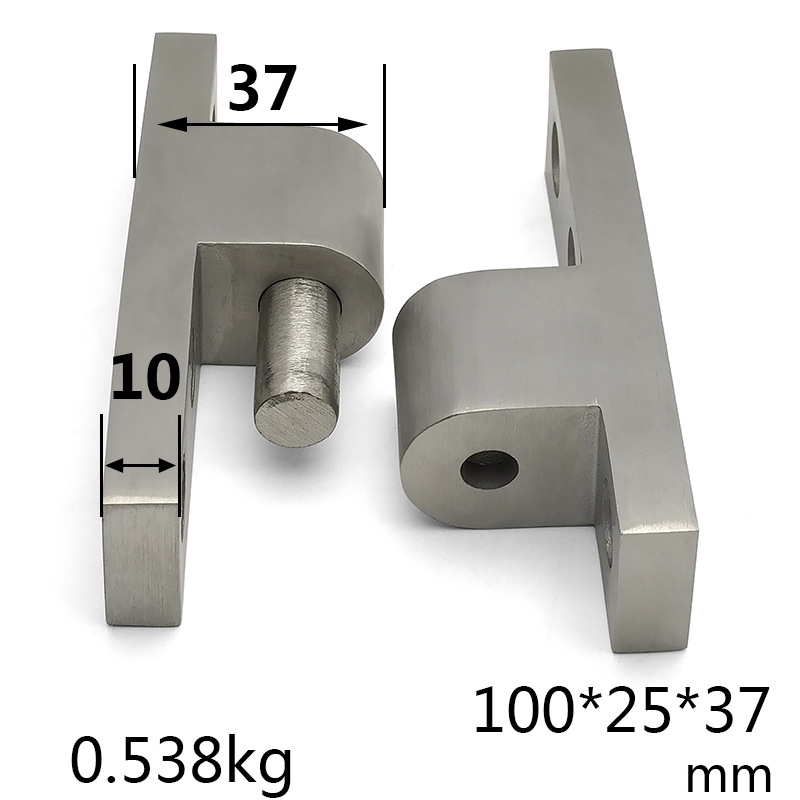
Handling Non-Removable Hinge Pins
Non-removable hinge pins present a unique challenge, as they are typically used for security purposes. These hinges are designed so the pins cannot be easily removed from the outside. If you have a door with non-removable pins, you may need a specialized tool or consult with a professional to avoid damage.
In some cases, these pins have a cap or locking mechanism that must be disengaged before the pin can be safely removed.
Prevent Future Issues by Regular Maintenance
To prevent hinge pins from getting stuck in the future, regular maintenance is essential. Apply lubricant to the hinge pins periodically to prevent rust and corrosion. Keeping the hinges clean and free from paint or dirt buildup will also ensure smoother operation.
If your door uses specialized hinges like butt hinges, ensure that proper alignment and lubrication are maintained to prevent wear and tear over time.
Conclusion
Removing a stuck hinge pin requires patience and the right approach. With proper tools, such as oil, a hammer, heat, or a hinge pin removal tool, you can safely extract the pin without causing damage.

